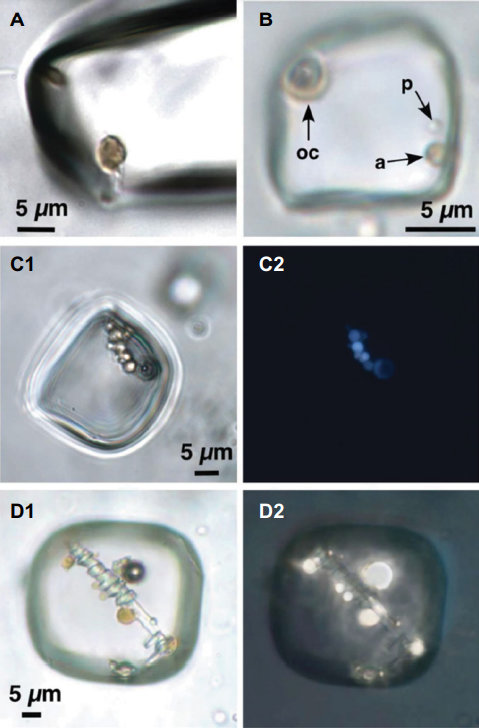830-million-year-old microorganisms found alive

A team of geologists from West Virginia University has discovered what are apparently living cells in halite (rock salt) estimated to be 830 Ma old and more than 1.5 km below the surface. You may read a summary by Michelle Starr in Science Alert here, or you may find the full article in Geology here.
The geologists used optical and ultraviolet fluorescence microscopy and found what they think are algal and prokaryotic cells trapped inside liquid inclusions in the halite. It is at least possible that the cells are alive, judging by the fluorescence spectra.
I checked with a biologist, who confirmed my intuition that a seed or a spore, in order to remain alive, must display at least minimal metabolism. It is therefore hard to imagine a spore lasting for so many years, and indeed the Geology paper notes that the “microorganisms may survive in fluid inclusions by metabolic changes, including starvation survival and cyst stages, and coexistence with organic compounds or dead cells that could serve as nutrient sources,” that is, that they may have been active sometimes and dormant at other times.
Years ago, we used some green branches as tomato stakes. At the end of the season, we noticed some green leaves at the top end of one or more of the stakes. “How stubborn life is!” my mother exclaimed. She did not know the half of it.
Thanks to Vivian Dullien for alerting me to the article and discussing it with me.
